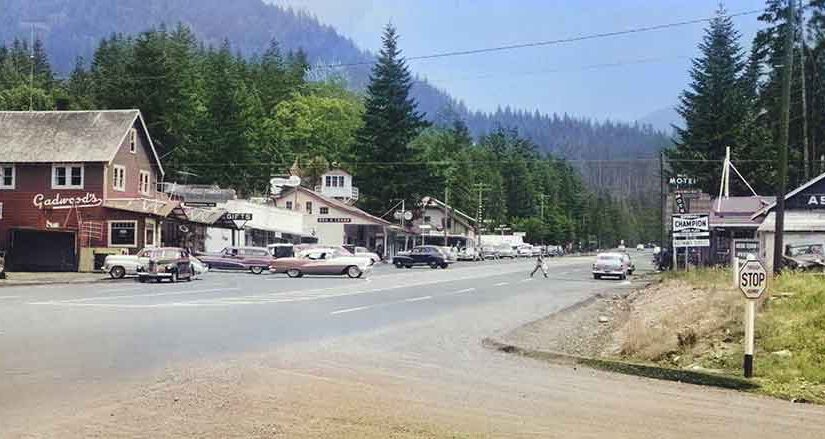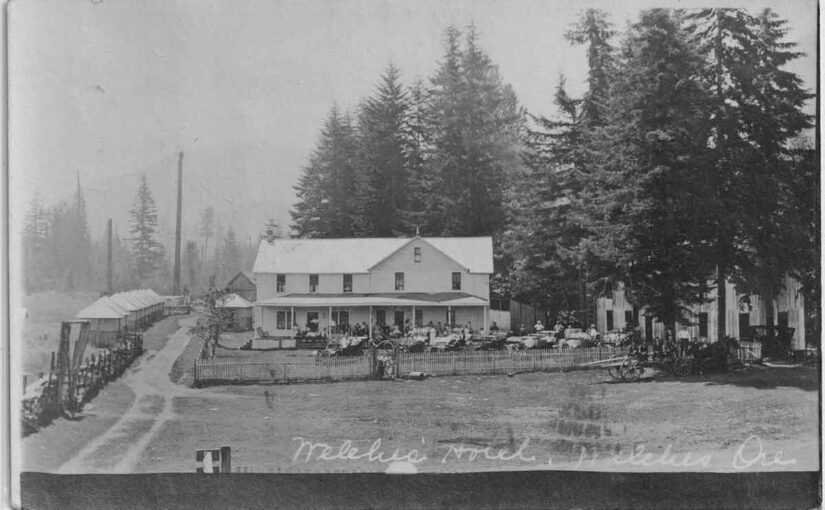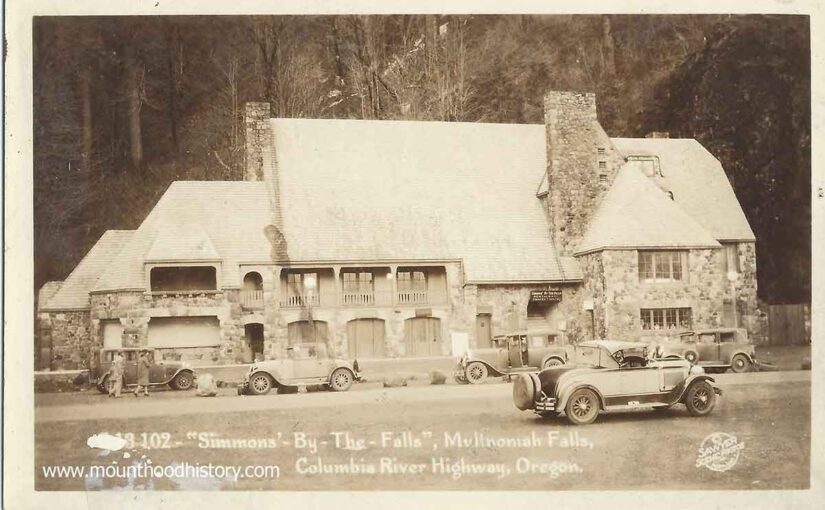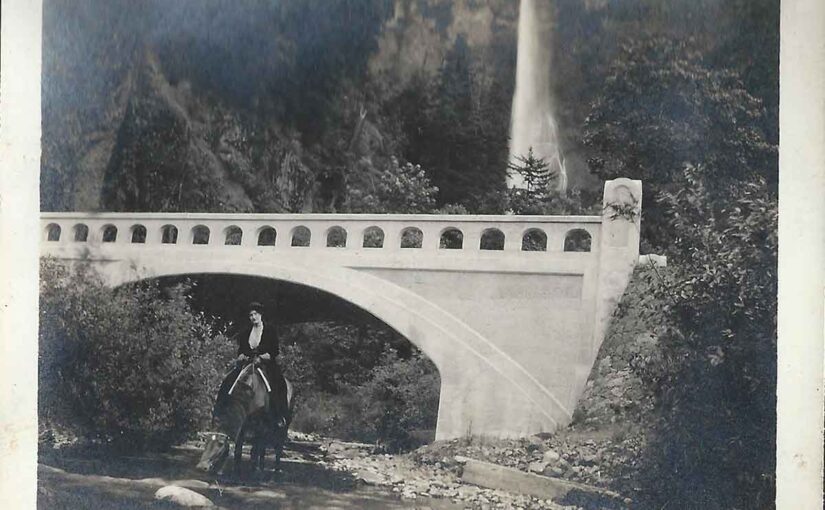A Full Circle Connection
History has a way of coming full circle. Even postcards sent over 100 years ago from the other side of the world can find their way home. As a collector of old photos and historic photo postcards, I am always drawn to items that hold historical significance, especially those connected to the communities surrounding Mount Hood. This is a story of Adolph Aschoff’s Letters Home
During one of my searches, I came across a fascinating discovery—a postcard from Marmot, Oregon, written by Adolph Aschoff and addressed to his nephew in Germany. It was being sold by a dealer overseas, and I immediately knew I had to have it.
A Hidden Collection Unearthed
After purchasing the postcard, I asked the seller if he had more. At first, he had only found one in a shop in town. However, he offered to return and check for additional cards. To my surprise, he located and sold me six postcards in total, all written by Adolf Aschoff in meticulous longhand German script. The handwriting was so small and precise that reading it practically required a magnifying glass.
Since I do not speak or read German, I reached out to friends for help. Fortunately, my friend Bill White suggested that his German friend, who lives in Germany, might be able to translate them. Without hesitation, I scanned the messages and emailed them to Bill, who then forwarded them to his contact.
The Translations and a Deeper Story
Several weeks later, Bill sent me six translated documents. Each contained the original German text along with its English translation. As I read through them, I felt both excited and deeply grateful to finally understand Adolf’s words.
Originally from Celle, Germany, Adolph Aschoff settled in Marmot, Oregon, in 1883. There, he built Mount Hood’s first resort, Aschoff’s Mountain Home. Known for his cheerful and enthusiastic personality, he welcomed guests with warmth and hospitality, ensuring they had an unforgettable experience.
However, these personal letters reveal a more intimate and emotional side of Adolf. Life was not always easy. His writings express worry, stress, and heartbreak, shedding new light on the struggles and hardships he faced. Despite his outward joy, these messages offer a glimpse into his challenges and personal battles.
These postcards are more than just old letters. They provide a rare window into history, allowing us to better understand the life, emotions, and experiences of one of Mount Hood’s most iconic early settlers. Adolph Aschoff’s Letters Home.
For more information about Adolf and the town of Marmot you can read about it at this link. CLICK HERE
Below are the photos and their messages.
The Letters To Home
Marmot, Oregon, July 16, 1908
My dear Otto!
It always goes on in business, from early in the morning to late in the evening. A lot of annoyance and little joy is my experience. Again I just lost a beautiful horse, my wife thought a lot about the (poor) animal. She called it hers. We have a lot of rain and it is quite cold and then we have very deep paths again – everything seems to go wrong, even in nature.
On the other side (of the postcard) you can see our house. No. 1 is my wife, No. 2 is a maid. I keep my two year old German stallion.
Best regards. Your old (friend)
Adolf Aschoff
Marmot, Ore. March 22, 1910 6 am
Dear Otto!
We are desperately awaiting a sign of life of you from the old homeland with every incoming mail – and from day to day – week to week etc. I am trying to find the time and opportunity to write to you. I have not been well for quite some time now – I suffer headaches – melancholy etc. I wish I could sell us – had a great offer but my wife wasn´t please. If I don´t try to visit Germany soon – I will probably never see it again. Both of our sons, Ernst and Henry, are now fathers of two strong boys. – We had an awful time with our three daughters in the last year – all three of them had major operations in the hospital, and now our Emma is back at the hospital and is being operated again.
On the other side (front side) you see Gustav, our youngest son on a foal, as he was riding it for the first time, he is 15 years old.
Please, write to me very soon.
Have a happy Easter wishes you your uncle
Adolf Aschoff
Marmot, Ore. July 19, 1910
Dear Otto,
Your endearing letter has been received. Your letter has doubled the desire to see you and the beloved old homeland – I know I would be welcome at your home and if you knew me better, you would know that a westerner does not cause any inconvenience – We have loads of trouble, loads of work – with the hay harvest and everything adds together – The salary for the workers is very high – chef (lady) $70.00 per M, house maid $20-25.00, day laborers $2.50 – $4-5 per day. I don´t know how this is going to end. All workers only want to work 8 hours – but we are usually working 18 hours a day – will write as soon as I have a few minutes to myself
Best wishes from all of us,
Your uncle Adolf Aschoff
Marmot, Ore. February 25, 1911
My dearest Otto,
I hope you have received the newspaper “The Oregonian”, I am sending you the same one, so you can get an idea of the growth of the American cities. As we arrived in Oregon, Portland was about the size of Celle – now Portland has more than 230,000 citizens. We are well, except for Otto, who has been in the hospital for months. Best wishes to you and your dear family.
Your uncle Adolf Aschoff.
PS: I will try to write you a letter soon.
Marmot, Ore. 6/13/1912
My dear Otto,
I haven´t heard anything from you for quite some time now, I try to receive a sign of life, “an answer” to this postcard. I am sending you a newspaper with this letter and I send more if you are interested.
Various accidents have again happened to our family. Our daughter Marie is very sick – our son Ernst has fallen of a …?…. post and our son Otto has chopped himself in the leg. Due to the incautiousness of a stranger I have been thrown of my carriage and I suffer pain in my right arm and shoulder. More work than ever, I wish we could sell us, it is getting to much for my wife and me – from 5 am to 11 pm day to day we slave away (like ox) without a break. Dear Otto, I hope you and your loved ones are well and at good health.
The most sincere wishes from all of us to you and your dear family.
Your uncle Adolf Aschoff
Marmot, Ore. January 30, 1913 – To: Mrs. Adele Aschoff
My dear friends,
Marmot shows a different picture these days than on the other side of this card. The snow has started to melt, but it will take a long time until the last traces will be gone.
Our dear daughter Marie is still very sick, it is better on some days and then she suffers bad seizures.
Best wishes,
Your Adolf Aschoff
Marmot, Ore. Nov. 19. 1916
My dear Adele, (Mrs. Adele Aschoff)
Thank you very much for your wishes – I am very happy that our dear Otto is still healthy and I hope that he soon will be back with his loved ones well and brisk. Please send him my best regards. I haven´t received anything from Eugen in the last months – newspapers etc. No news have arrived since February from you as well as Eugen. My son Karl has broken his arm when he started (? “up-winded”) an automobile – my wife is very sick again. Please write back to me even if it´s only a few lines.
With the best regards
Your uncle Adolf Aschoff










